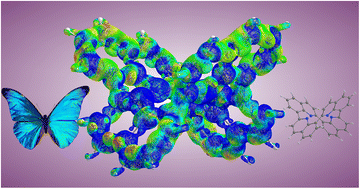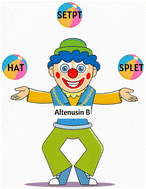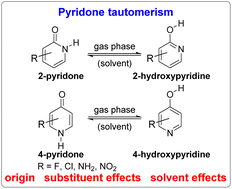Themed collection Computational Organic Chemistry

Introduction to Computational Organic Chemistry
Jonathan Goodman, Jolene Reid and Judy Wu introduce the Organic & Biomolecular Chemistry themed collection on Computational Organic Chemistry.

Org. Biomol. Chem., 2024,22, 7072-7073
https://doi.org/10.1039/D4OB90102A
On the mechanism of carboxylate elimination from carbohydrate monoester-derived radicals
Computational analysis of the HAT-induced expulsion of carboxylic acids from monoacylated pyranosides implicates concerted elimination through a hydrogen-bonded transition state.

Org. Biomol. Chem., 2024,22, 3225-3229
https://doi.org/10.1039/D4OB00241E
Computational methods for investigating organic radical species
Computational analysis of organic radical species presents significant challenges. This study compares the efficacy of various DFT and wavefunction methods in predicting radical stabilisation energies, bond dissociation energies, and redox potentials.

Org. Biomol. Chem., 2024,22, 6166-6173
https://doi.org/10.1039/D4OB00532E
Intermolecular hydrogen bonding behavior of amino acid radical cations
DFT calculations revealed the structural and energetic impact of oxidation on major intermolecular hydrogen-bonding modes of amino acids.

Org. Biomol. Chem., 2024,22, 3966-3978
https://doi.org/10.1039/D4OB00301B
Exploring the mechanism of the reductive amination of acetophenones via the Borch approach: the role of the acid catalyst
In the reductive amination process, the acid catalyst plays a crucial role not only in the elimination of water but also in the nucleophilic step, particularly when electron-donating groups are installed at the para-position of the acetophenone.

Org. Biomol. Chem., 2024,22, 3926-3932
https://doi.org/10.1039/D4OB00160E
Binding of the plant-derived toxin simplexin to bovine protein kinase C: insights from molecular dynamics
Pimelea poisoning of Australian cattle is attributed to the natural toxin simplexin binding to bovine PKC. Molecular dynamics simulations reveal simplexin's high affinity for PKC, and identify SAR for future molecular interventions against poisoning.

Org. Biomol. Chem., 2024,22, 2863-2876
https://doi.org/10.1039/D4OB00065J
Molecular dynamics and NMR reveal the coexistence of H-bond-assisted and through-space JFH coupling in fluorinated amino alcohols
The JFH coupling constants in fluorinated amino alcohols were investigated through experimental and theoretical approaches.

Org. Biomol. Chem., 2024,22, 2580-2595
https://doi.org/10.1039/D4OB00049H
Tetraquinolines; four linked quinoline units or porphyrinoids
3D current density distribution in TEQ2+ suggests a transformation from antiaromaticity to aromaticity.

Org. Biomol. Chem., 2024,22, 2284-2291
https://doi.org/10.1039/D3OB01616A
A theoretical study on radical scavenging activity of phenolic derivatives naturally found within Alternaria alternata extract
The antioxidant mechanisms and properties of four dibenzopyrone phenolic compounds from Alternaria alternata are studied using DFT, molecular docking, and dynamics studies.

Org. Biomol. Chem., 2024,22, 2059-2074
https://doi.org/10.1039/D3OB02126B
Dehydration of alcohols catalyzed by copper(II) sulfate: type II dyotropic reactions and stepwise mechanisms
Dehydration of alcohols by CuSO4 can take place via (asynchronous) concerted or stepwise mechanisms. DFT calculations show the effect of the substitution pattern of the starting alcohol on the actual mechanism.

Org. Biomol. Chem., 2024,22, 1800-1811
https://doi.org/10.1039/D3OB02052E
Theoretical insights into the enantiodivergence induced by chiral phosphoric acid catalysis with a Lewis acid for the synthesis of N–N axially chiral atropisomers
A detailed theoretical mechanistic investigation on the enantiodivergence of chiral phosphoric acid-catalyzed Paal–Knorr reactions with/without a Lewis acid for the synthesis of N–N axially chiral atropisomers is described.

Org. Biomol. Chem., 2024,22, 1654-1661
https://doi.org/10.1039/D3OB02011H
Theoretical investigation of tautomerism of 2- and 4-pyridones: origin, substituent and solvent effects
DFT calculations show that the tautomeric equilibria of 2- and 4-pyridones are controlled by different effects and can be modulated by substituents and medium polarity. A more polar medium favours the more polar lactam form.

Org. Biomol. Chem., 2024,22, 144-158
https://doi.org/10.1039/D3OB01588B
Oxa-azabenzobenzocyclooctynes (O-ABCs): heterobiarylcyclooctynes bearing an endocyclic heteroatom
We report the synthesis of heterobiarylcyclooctynes bearing an endocyclic heteroatom, oxa-azabenzobenzocyclooctynes (O-ABCs).

Org. Biomol. Chem., 2023,21, 8857-8862
https://doi.org/10.1039/D3OB01559A
Exploring α-electron-deficiency-induced [1,2]-fluorine migration
The α-electron-deficiency-induced [1,2]-fluorine migration reaction follows a concerted mechanism with a tight-ion-pair transition state. When coupled with other reaction units, mechanistic variants are asynchronously concerted.
![Graphical abstract: Exploring α-electron-deficiency-induced [1,2]-fluorine migration](/en/Image/Get?imageInfo.ImageType=GA&imageInfo.ImageIdentifier.ManuscriptID=D3OB01335A&imageInfo.ImageIdentifier.Year=2023)
Org. Biomol. Chem., 2023,21, 8675-8689
https://doi.org/10.1039/D3OB01335A
Strengthened cooperativity of DNA-based cyclic hydrogen-bonded rosettes by subtle functionalization
Cooperative effects cause extra stabilization of hydrogen-bonded supramolecular systems.

Org. Biomol. Chem., 2023,21, 8403-8412
https://doi.org/10.1039/D3OB01391J
Understanding the reactivity and selectivity of Diels–Alder reactions involving furans
The origins of the reactivity and endo/exo selectivity of the Diels–Alder cycloaddition reactions involving furan and substituted furans as dienes have been computationally explored.

Org. Biomol. Chem., 2023,21, 7767-7775
https://doi.org/10.1039/D3OB01343J
Effects of phosphine ligands in nickel-catalyzed decarbonylation reactions of lactone
It is the electronic effect of the phosphine ligands that plays a dominant role in the Ni-catalyzed decarbonylation reactions.

Org. Biomol. Chem., 2023,21, 7410-7418
https://doi.org/10.1039/D3OB01216F
Design rules for optimization of photophysical and kinetic properties of azoarene photoswitches
The E-isomer λmax and Z-isomer t1/2 have been simultaneously optimized for a set of 26 hemi-azothiophenes. We found that by incorporating cross-conjugated thiophenes and additional π-conjugation, these two properties can be leveraged.

Org. Biomol. Chem., 2023,21, 7351-7357
https://doi.org/10.1039/D3OB01298K
About this collection
This themed issue guest edited by Professor Jonathan Goodman (University of Cambridge), Professor Jolene Reid (University of British Columbia) and Professor Judy Wu (University of Houston), aims to highlight some of the excellent research currently happening in the field of computational organic chemistry, providing explanations, predictions and insights for the reactivity, structure, functions, and properties of organic systems.
New articles will be added to the collection upon publication. Please return to this page frequently to see the collection grow.